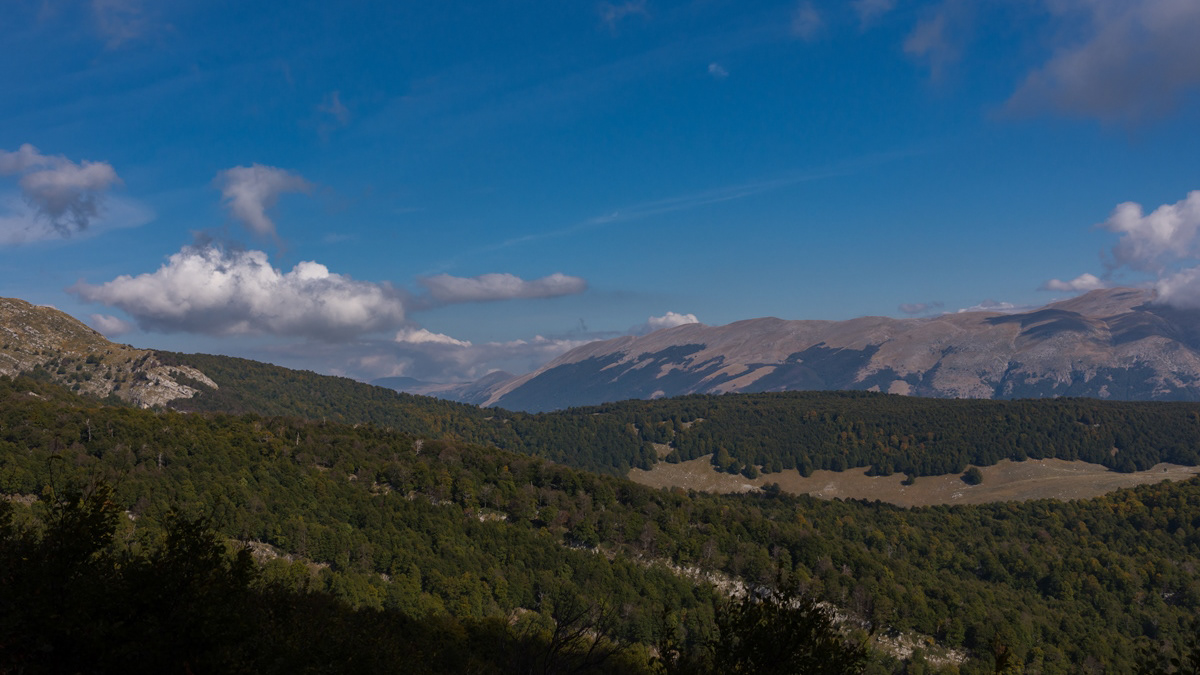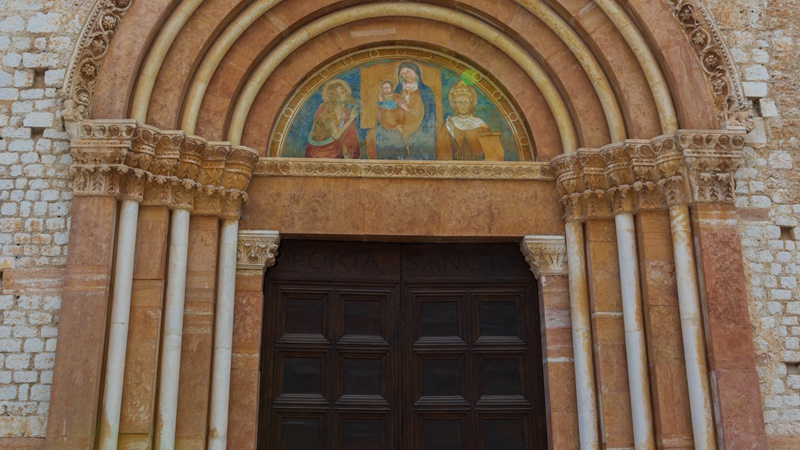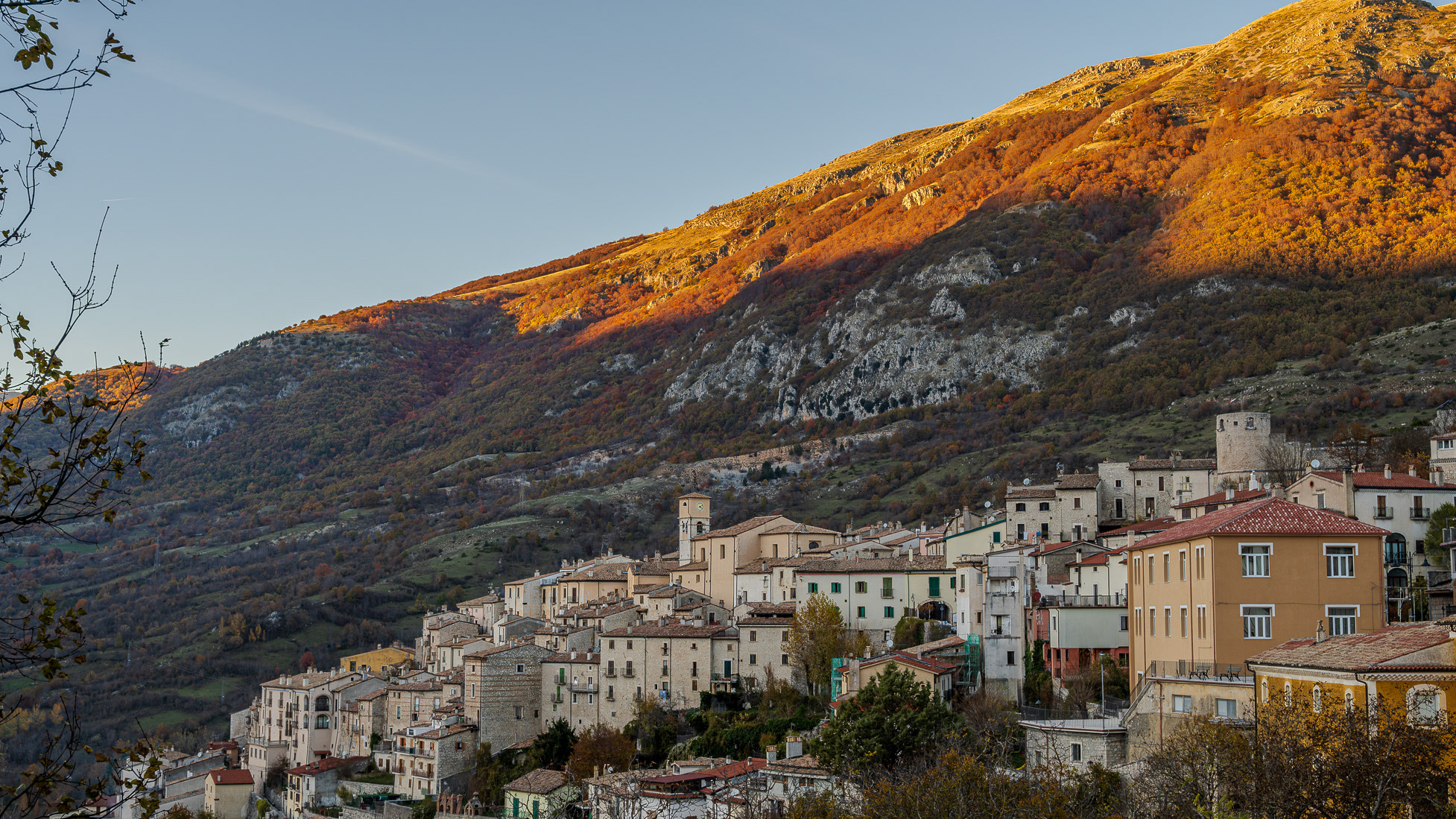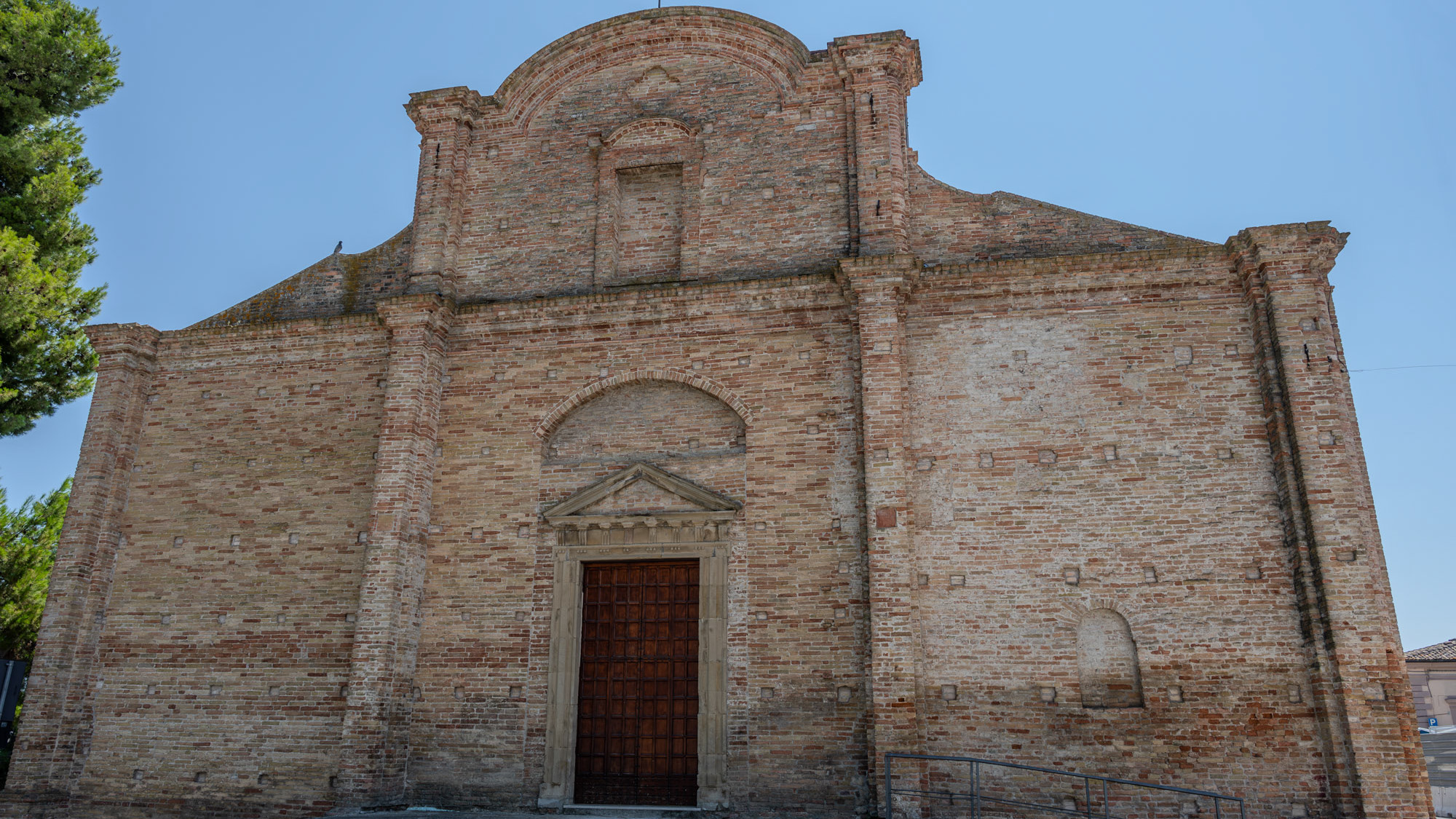Fossacesia. Abbey of San Giovanni in Venere
2024
It is a Christian monastic complex located in the municipality of Fossacesia, on a hill overlooking the Adriatic Sea. The complex is made up of a basilica and the nearby convent.
You may also like
2021
Borrello
Borrello (Burièlle in Abruzzo) is an Italian town of 326 inhabitants in the province of Chieti in Abruzzo. It is part of the mountain community of Medio Sangro. The municipality of Borrello, as also handed down by Benedetto Croce, was a fief of the Borrello family: the Abruzzo philosopher claims to have found a document from the year 1000 that would suggest a certain dominion of this family already at the end of the 18th century. In fact, the news is also confirmed by the most ancient historical sources, consulted and collected in the eighteenth century by Anton Ludovico Antinori for the drafting of his Annali degli Abruzzi, in which the progenitor of the dynasty, a certain Borrello from whom the Castle then took its name and he perpetuated it over the centuries, he would have been a Frankish leader descended from the Counts of the Marsi. Croce, on the other hand, states that the family descends from some exponent of the Borel family of French origin. At the beginning of the 20th century, many of the country's inhabitants emigrated to the United States and northern Europe. After the bombing of the Second World War the city was completely rebuilt.

2017
Mainarde
Mountain range which, compared to the Abruzzo National Park, extends from north to south and whose crests delimit the border between Lazio (west) and Molise (east). Due to its importance both from a naturalistic and faunistic point of view, the mountain range was inserted by presidential decree in the Abruzzo National Park in January 1990. It includes high altitude peaks that are around 2000 meters: Monte Meta (2241), Monte Metuccia, Coste dell'Altare, Monte Mare (2020), Monte Cavallo (2039), Monte Forcellone (2030). The Mainarde, like the rest of the Apennine mountains, are very ancient and of limestone origin. On them the erosion of winds and waters has left clear traces in gorges, gullies and beautiful potholes of the giants, the latter very clearly visible by anyone who looks out from the viewpoint of San Michele. Covered by dense arboreal vegetation (beech groves) up to an altitude of 1800-1900 meters, the Mainarde - beyond this altitude - offer a spectacular turf, ideal habitat for particular types of endangered fauna such as the Abruzzo chamois the Marsican brown bear, the Apennine wolf and the lynx.
2024
Manoppello. The Holy Face
The Holy Face is a depiction of the face of Jesus preserved in Manoppello, in the Basilica of the Holy Face.

2018
L'Aquila - Basilica of S. M. di Collemaggio
The basilica of Santa Maria di Collemaggio is a religious building in L'Aquila, located just outside the city walls, on the hill of the same name. Founded in 1288 at the behest of Pietro da Morrone - crowned pope here with the name of Celestino V on 29 August 1294 - it is considered the highest expression of Abruzzo architecture, as well as the symbol of the city and was declared a national monument in 1902. Since 1327 houses the remains of the pontiff, currently preserved inside the mausoleum of Celestino V, built in 1517 by Girolamo da Vicenza, master of Andrea Palladio. It is the seat of an annual jubilee, the first in history, established with the Bull of Forgiveness of 29 September 1294 and known as Perdonanza Celestiniana; therefore, it is characterized by the presence of a Holy Door on the side facade. The church, which boasts the title of minor basilica together with the fellow citizens San Bernardino and San Giuseppe Artigiano, has been remodeled several times over the centuries mainly due to the damage caused by frequent earthquakes and presents a mixture of different architectural styles. Following the 2009 earthquake, it was subjected to consolidation and restoration works which ended in 2017.

2025
Crecchio. The Ducal Castle De Riseis-D'Aragona
The castle is composed of four corner towers that enclose as many buildings. It is surrounded by a perimeter of walls that also enclose a garden.

2023
Barrea and its lake. Glimpses of autumn
Barrea (Varréa in Barreano dialect) is an Italian municipality of 705 inhabitants in the province of L'Aquila in Abruzzo. Located in Alto Sangro, it is a tourist resort thanks to the presence of the lake of the same name and the national park of Abruzzo, Lazio and Molise. Barrea is located in a mountain area belonging to the Alto Sangro basin and Lake Barrea. The inhabited center, located at an altitude of 1,060 m above sea level, occupies a protrusion at the eastern end of the lake enclosed by the steep sides of the Meta mountains to the south and Mount Greco to the north. The lake was created in 1951 by damming the Sangro river and is used for the production of electricity. The Barrea Lake Wetland, managed by the Abruzzo Lazio and Molise National Park Authority, has been on the list of areas covered by the Ramsar Convention since 1976.
2021
Rio Verde
The Rio Verde was born in Quarto, between Abruzzo and Molise, and after a short path it joins the Sangro with a considerable difference in height (400 m) creating the spectacular waterfalls divided into three consecutive jumps of 200 meters.

2024
Morro D’Oro. Church of SS. Salvatore
At the entrance to the town of Morro D'Oro (Teramo), 210 m above sea level, there is the Church of SS.mo Salvatore. It is also dedicated to St. Nicholas of Bari, patron saint of Morro D'Oro
2023
Spectacular autumnal landscapes. Foliage
Abruzzo is an Italian region located east of Rome, between the Adriatic and the Apennines. The hinterland is mostly made up of national parks and nature reserves. The region also includes medieval and Renaissance villages perched on the hills. The regional capital, L'Aquila, is a city surrounded by walls, damaged by the earthquake of 2009. The Costa dei Trabocchi, with its sandy coves, takes its name from the traditional fishing jetties.
2022
Lanciano. Seat of the Eucharistic Miracle
The church of S. Francesco or sanctuary of the Eucharistic Miracle is annexed to the homonymous convent of the Friars Conventual. It contains the famous relics of the Eucharistic miracle of Lanciano.
